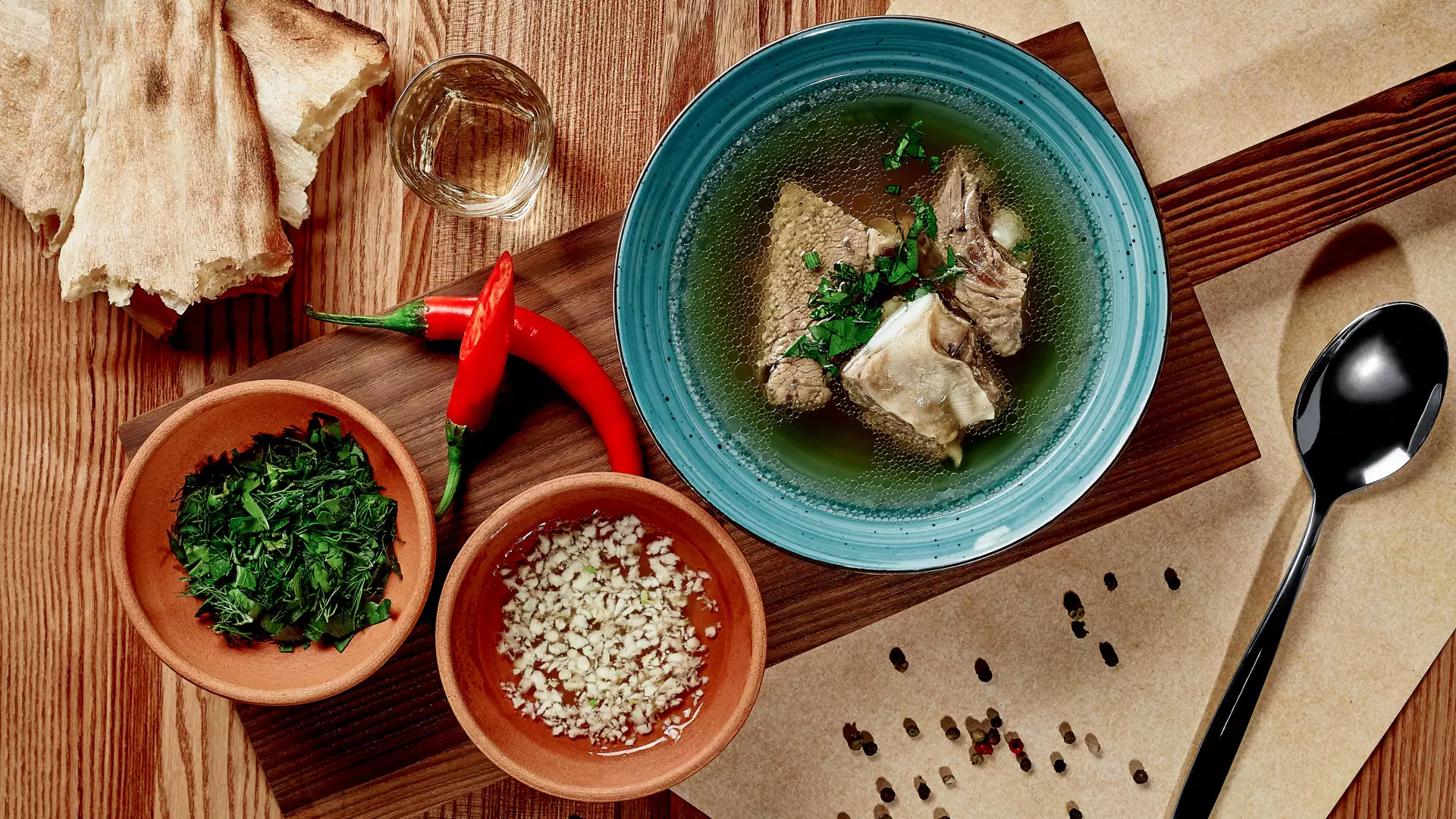Khashi
It is said that in Asia, during fasts, when people would not eat from sunrise to sunset, at the command of the beys and khans, livestock would be slaughtered when they were not fasting and the meat would be sent to the houses of the rich, while the innards, head, and feet would be cleaned and boiled overnight over a fire. In the morning, it would be seasoned, the finishing touch for a delicious soup. Traditionally, only men would prepare khashi, appreciated as much for its taste and nutrition as its low cost.
Khashi in Georgia
Khashi, within Georgian cuisine, is revered as a trusty hangover cure. Its name probably comes from Turkish, and similar dishes are found throughout the whole Caucasus. However, Tbilisi’s version is unique, and still eaten at dawn to ease the effects of the previous night’s indulgence.
Today, khashi is considered by some as a delicacy in Georgia. Its preparation takes time, as it is boiled all night long, and it is rarely made in the home. Instead, you can try it at dedicated khashi restaurants. The culture of eating khashi is especially common in Tbilisi, where every district has at least one khashi restaurant, usually populated entirely by men.
Khashi was also traditionally made in the villages. In particular, if livestock were slaughtered during a well-attended wedding, khashi would certainly be boiled for the next day, so that the party-goers could devour the soup to recover.
Georgian khashi differs from other types in that crushed garlic, salt, and milk are added according to individual taste. The nutritional value of khashi lies in the gelatin, which is separated from the head and feet of the livestock during the boiling process, and is often used medicinally, especially for colds, broken bones, and stomach problems.
How to Make Khashi
In Georgia, khashi is made with the head, feet, and stomach of livestock. Cleaning is an integral part of the process with the stomach put in lime beforehand, so the interior membrane softens and can be easily removed, to render it ready for boiling. The well-cleaned and rinsed khashi ingredients are then cut (with the hooves removed at the joints), and then placed into cold water with vinegar for a few hours, and finally coated with rough salt.
This well-processed khashi mix should turn gleaming white. The first broth is poured out quickly, before the fat starts to emerge. Then, the meat should be covered with water and set over a low flame. Once the water has dried up, fill it with boiling water and boil it, half-covered, over a low flame. The boiling process lasts all night. The meat should be tasted in the morning, to check whether it is ready. The hooves should be sticky, soft, and sparkling. By now, the broth will have taken on a light creamy color. Many people also add pieces of old bread, wrapped in gauze, to the soup while it is boiling.
Each serving of the soup should have 10 to 12 reasonable-sized pieces of stomach and hoof.
Five kilograms of khashi makes about 15 servings of soup. Some attest that everyone should have khashi three or four times a year, and it is especially popular during winter.
There is also a specific culture of eating khashi. The first rule is that you should never go to eat khashi alone in Georgia. The weary party-goers must eat it together, while garlic, milk, tone bread, and chacha are also necessary accompaniments. In Georgia, it is made from beef by-products, but in other parts of the Caucasus and Muslim countries it is made from mutton.
Cookie Policy

